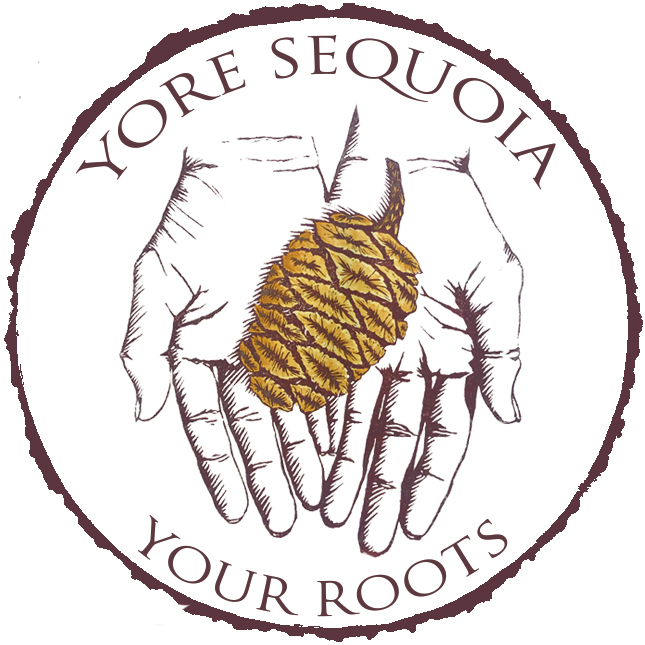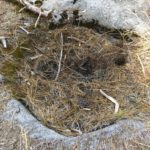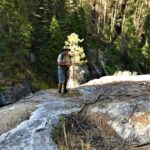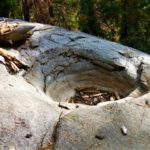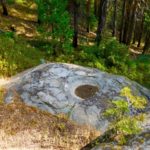n
One of Sequoia’s ancient mysteries, prehistoric bedrock basins present an unsolved riddle handed down from from the native denizens of this land to its current visitors.
Bedrock Basins, Atwell Grove
NOTE: This is a compilation of two articles written by John Elliott, 3RNews, in August 2019, with an editorial update in 2021.
One of the unsolved riddles handed down by Kaweah Country native people to present-day occupants are the prehistoric bedrock basins.
Commonly called “Indian Bathtubs,” these cavities are located in granite slabs, measure four to five feet in diameter, and are two or more feet in depth. They are shaped like huge wash bowls with smooth curved sides and bottoms.
Although they may be work of an ancient people, the the present-day Native Americans know nothing about them — either who made the basins or how.
Some researchers believe they were worn by the action of running water or glaciers. But some basins are found in locations where there is no historical evidence of creeks or rivers, and some are located below the assumed lowest extent of the Tahoe and Tioga glaciations.
The Sequoia basins are found in groups at elevations from 4,000 to 9,000 feet, scattered over an area about 35 miles long. Similar basins occur through the southern Sierra Nevada, however, from northernmost California to Lake Isabella on the south.
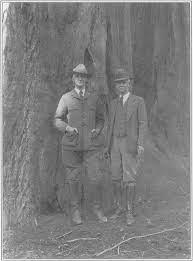
In 1925, George W. Stewart was camped at Redwood Meadow in Sequoia National Park, where he inspected some of these mysterious basins in the company of Stephen Mather, first director of the National Park Service.
Known as the “Father of Sequoia National Park” for his role in the creation of the park in 1890, Stewart was the editor and publisher of the Visalia Delta newspaper. He is remembered for his efforts to preserve the Big Trees. Before his death in 1931, he wrote extensively on national parks including an article on the rock basins that was published in the American Anthropologist in 1929.
In this article, Stewart described the basins near Redwood Meadow. These specimens had been excavated in the tops of small granite knob-like outcrops scattered among the giant sequoias, pines, and firs adjoining the meadow.
“The knobs consist essentially of unfractured, massive granite and measure from five to fifteen feet in height and from twenty to thirty feet in major diameter” he described. “The basins are almost perfectly circular in outline and smoothly concave. In a general way, they resemble the well known mortar holes in which the Indians grind acorns and seeds, but they are many times larger and more smoothly finished.”
More current research suggests the Modoc people to the north and east of Lassen country may have used the basins to evaporate salt; however, the basins in Sequoia country are not near significant salt deposits or saltwater sources — they were used for something else.
Nearly a century later, there is still no scientific consensus explaining these curious basins. Who made this curious rockwork and how they were used remains one of the great mysteries of the Sequoia region of Tulare County.
Disclaimer: These rock basins are archaeological sites and may contain information helpful to researchers in deciphering their origin. To protect them is illegal to excavate or disturb them in any way, including moving or removing any artifacts, duff, dirt, or forest materials from those vicinities.
